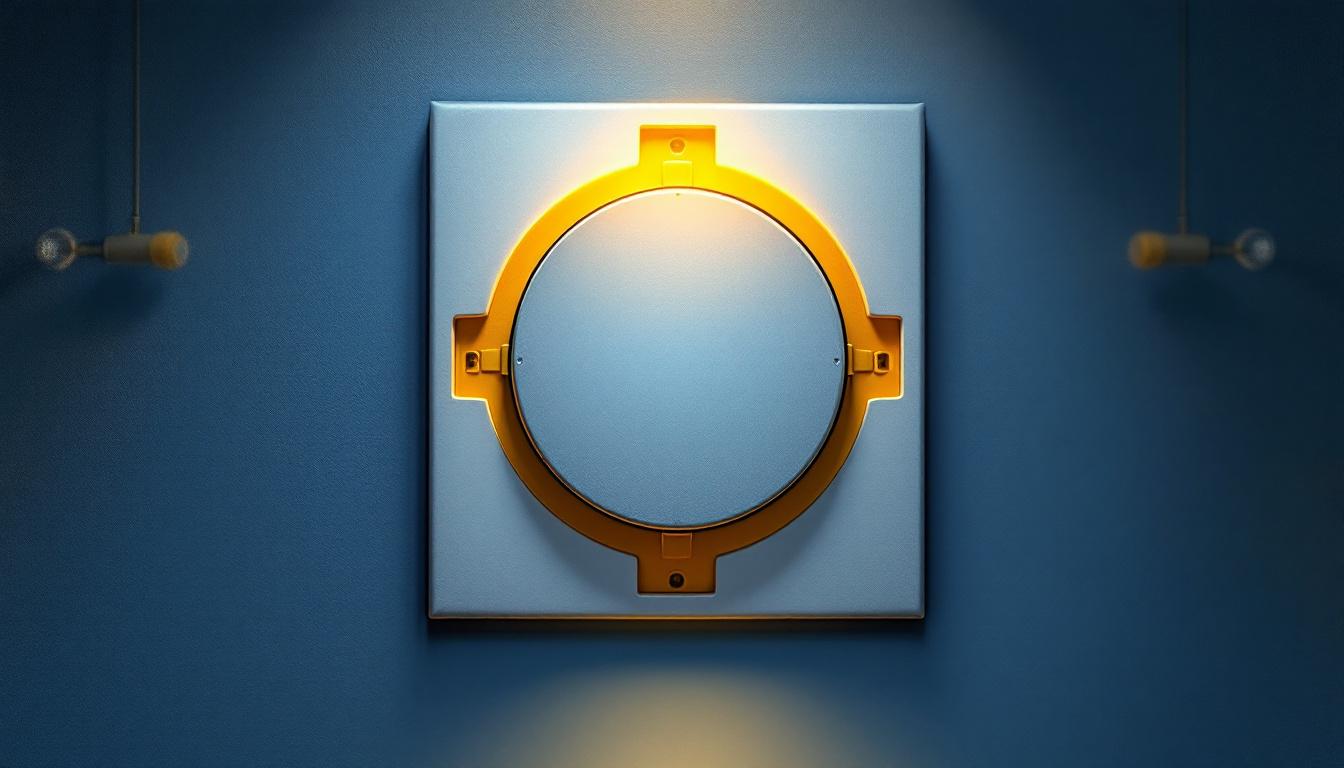
As a lighting contractor, understanding the nuances of electrical junction boxes is crucial for ensuring safety and compliance in your projects. One key component in this realm is the round electrical junction box cover. This article delves into the essential do’s and don’ts for using these covers effectively, providing insights that can enhance your work quality and client satisfaction.
Round electrical junction box covers serve a vital role in protecting electrical connections and ensuring the safety of electrical systems. These covers are designed to fit snugly over junction boxes, preventing dust, moisture, and other contaminants from entering the box. They also provide a finished look to the installation, which can be particularly important in residential and commercial settings. In addition to their protective functions, these covers also play a role in maintaining the integrity of the electrical system by ensuring that all connections are securely housed and insulated from external elements.
There are various types of round junction box covers available, each suited for different applications. Some covers are made from plastic, while others are crafted from metal. The choice of material often depends on the environment in which the junction box is installed. For instance, metal covers may be preferred in industrial settings due to their durability, while plastic covers might be more common in residential applications. Furthermore, the aesthetic appeal of the cover can also influence the choice; decorative options are available for residential installations where style matters as much as function.
Additionally, some covers come with integrated features such as knockouts for easy wiring access, while others may be designed to be completely sealed. Understanding these options can help contractors choose the right cover for their specific needs. For example, covers with multiple knockouts allow for greater flexibility in wiring configurations, making them ideal for complex installations. On the other hand, sealed covers are essential in environments exposed to moisture or dust, such as outdoor settings or industrial facilities, where ensuring a tight seal is crucial for safety and performance.
Proper installation of round junction box covers cannot be overstated. A poorly installed cover can lead to safety hazards, including electrical shocks or fires. Moreover, an inadequate seal can allow moisture to enter, potentially damaging electrical components. Therefore, following best practices during installation is essential for ensuring the longevity and safety of the electrical system. This includes using the correct tools and techniques, as well as adhering to local electrical codes and regulations, which are designed to protect both the installer and the end user.
Furthermore, regular inspections and maintenance of junction box covers are equally important. Over time, wear and tear can compromise the integrity of the cover, especially in high-traffic or harsh environments. Inspecting these covers for signs of damage, such as cracks or corrosion, can help identify potential issues before they escalate into more significant problems. By prioritizing both proper installation and ongoing maintenance, homeowners and contractors alike can ensure that their electrical systems remain safe and functional for years to come.
Adhering to best practices when using round electrical junction box covers can significantly enhance the safety and efficiency of your installations. Here are some key do’s to keep in mind:
Choosing the appropriate cover for the specific environment and application is crucial. For instance, if the junction box is located in a damp area, such as a bathroom or outdoor setting, opt for a cover that is rated for wet locations. This ensures that the cover can withstand moisture and prevent any potential electrical hazards.
Moreover, consider the size and design of the junction box. The cover should fit securely without any gaps, as this can compromise its protective function. Always refer to the manufacturer’s specifications to ensure compatibility.
When installing a round junction box cover, it’s essential to ensure that it fits securely against the junction box. Use the appropriate screws or fasteners as specified by the manufacturer. A loose cover can lead to exposure of the electrical connections, increasing the risk of accidents.
Additionally, check that the cover is aligned properly and that any gaskets or seals are intact. This will help prevent moisture ingress and maintain the integrity of the electrical system.
Compliance with local electrical codes is non-negotiable. These codes are designed to ensure safety and reliability in electrical installations. Familiarize yourself with the relevant regulations in your area regarding junction box covers, including material specifications, installation practices, and labeling requirements.
Staying updated with local codes not only ensures safety but also protects you from potential liabilities. Regularly review any changes in regulations to maintain compliance in your work.
While there are many best practices to follow, there are also common pitfalls to avoid when working with round electrical junction box covers. Here are some key don’ts to keep in mind:
It can be tempting to choose cheaper options when selecting round junction box covers, but this approach can lead to significant issues down the line. Low-quality covers may not provide adequate protection against environmental factors, which can compromise the safety of the electrical system.
Investing in high-quality covers from reputable manufacturers ensures that you are providing your clients with reliable and safe installations. Quality materials and construction can prevent costly repairs and enhance the longevity of the electrical system.
Every junction box cover comes with specific installation instructions provided by the manufacturer. Ignoring these guidelines can lead to improper installation, which may result in safety hazards or equipment failure. Always read and follow the manufacturer’s instructions carefully to ensure a successful installation.
In addition, familiarize yourself with any warranty conditions that may be affected by improper installation. Adhering to the guidelines can also help maintain the warranty coverage for the products used.
While functionality and safety are paramount, aesthetics should not be overlooked. A well-finished installation enhances the overall appearance of the space and can significantly impact client satisfaction. Choose junction box covers that complement the design of the room, ensuring they blend seamlessly with the surrounding decor.
Consider using decorative covers in visible areas, such as living rooms or entryways, to enhance the overall look of the installation. This attention to detail can set your work apart from competitors and lead to positive referrals.
Even seasoned lighting contractors can make mistakes when working with round electrical junction box covers. Awareness of these common pitfalls can help ensure that installations are completed safely and effectively.
One of the most critical aspects of installing round junction box covers is ensuring a proper seal. Failing to do so can lead to moisture ingress, which can damage electrical components and create safety hazards. Always check that gaskets are in place and that the cover is tightened securely to prevent any gaps.
In addition, consider using sealants or caulking in areas prone to moisture exposure. This extra layer of protection can help safeguard against water damage and prolong the life of the electrical system.
Labeling junction boxes is an essential practice that is often overlooked. Proper labeling helps in identifying circuits and can be invaluable during maintenance or troubleshooting. Use clear, durable labels that indicate the function of the junction box and any pertinent information.
Investing a few moments in labeling can save significant time and effort in the future, especially in complex installations with multiple circuits. This practice not only enhances safety but also demonstrates professionalism to clients.
Regular inspections of junction box covers and the overall electrical system are vital for maintaining safety and functionality. Schedule routine checks to ensure that covers are secure, free from damage, and that there are no signs of moisture or corrosion.
Encourage clients to report any issues they notice, such as flickering lights or unusual sounds. Early detection of problems can prevent more significant issues and ensure the longevity of the electrical system.
Maintaining round electrical junction box covers is essential for ensuring their effectiveness and safety over time. Here are some best practices for maintenance:
Dust and debris can accumulate on junction box covers, potentially affecting their performance. Regular cleaning helps maintain a professional appearance and ensures that any ventilation openings remain unobstructed.
Use a soft, dry cloth to wipe down the covers, avoiding harsh chemicals that could damage the finish. For metal covers, consider using a mild cleaner designed for the specific material to maintain their integrity.
Conducting periodic inspections of junction box covers is crucial for identifying potential issues before they escalate. Look for signs of wear, corrosion, or damage, and address any concerns promptly. This proactive approach can help prevent electrical hazards and ensure the longevity of the installation.
During inspections, also check for proper labeling and ensure that all covers are securely fastened. This attention to detail can enhance safety and efficiency in the long run.
Round electrical junction box covers play a pivotal role in the safety and functionality of electrical systems. By adhering to the do’s and don’ts outlined in this article, lighting contractors can ensure that their installations meet safety standards and client expectations. From selecting the right cover to implementing best practices for maintenance, attention to detail is key.
Ultimately, investing time and effort into understanding and properly using round junction box covers can lead to successful projects, satisfied clients, and a solid reputation in the industry. By prioritizing quality, safety, and aesthetics, lighting contractors can elevate their work and contribute to safer electrical installations.
Ready to enhance your lighting projects with the highest quality junction box covers? LumenWholesale is your go-to source for spec-grade lighting products that meet the strictest industry standards. With our unbeatable wholesale prices and commitment to cutting out the middleman, you can trust that you’re getting superior products at the best value. Plus, with free shipping on bulk orders, you can stock up on all your lighting needs without worrying about hidden fees. Elevate your installations today and ensure your clients’ satisfaction with the perfect blend of quality, affordability, and convenience. Visit LumenWholesale now for Wholesale Lighting at the Best Value.

Discover the key challenges lighting contractors face when installing LED outdoor motion lights.

Discover how LED grow bulbs are revolutionizing the lighting industry for contractors.

Discover the essentials of home lighting automation compliance in this informative guide tailored for lighting contractors.

Discover the essential guide for lighting contractors on selecting the perfect three-way switches.